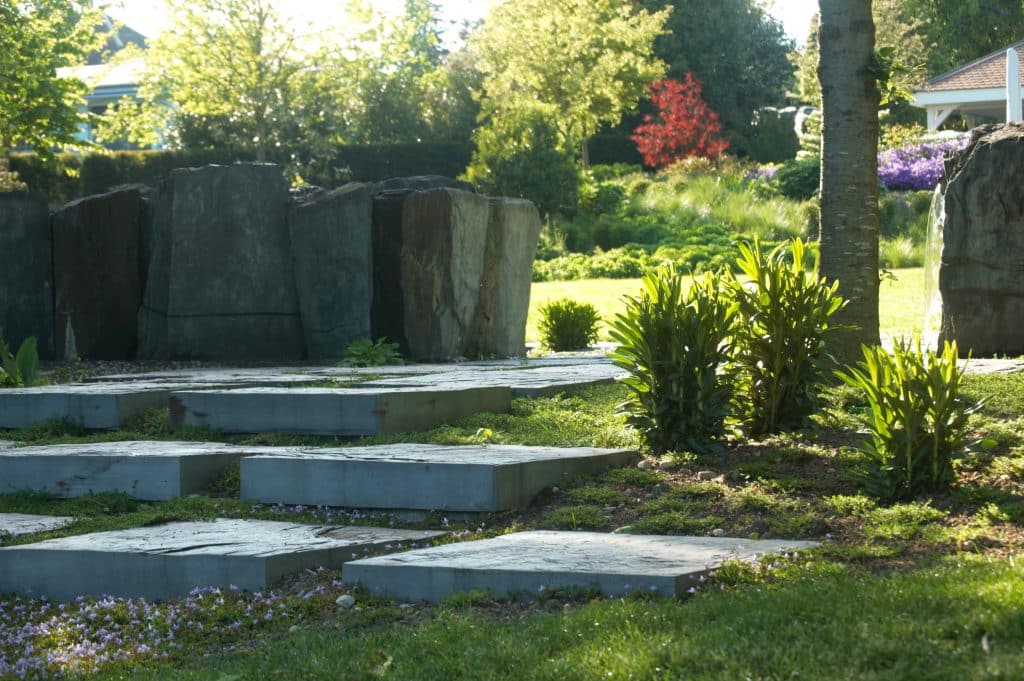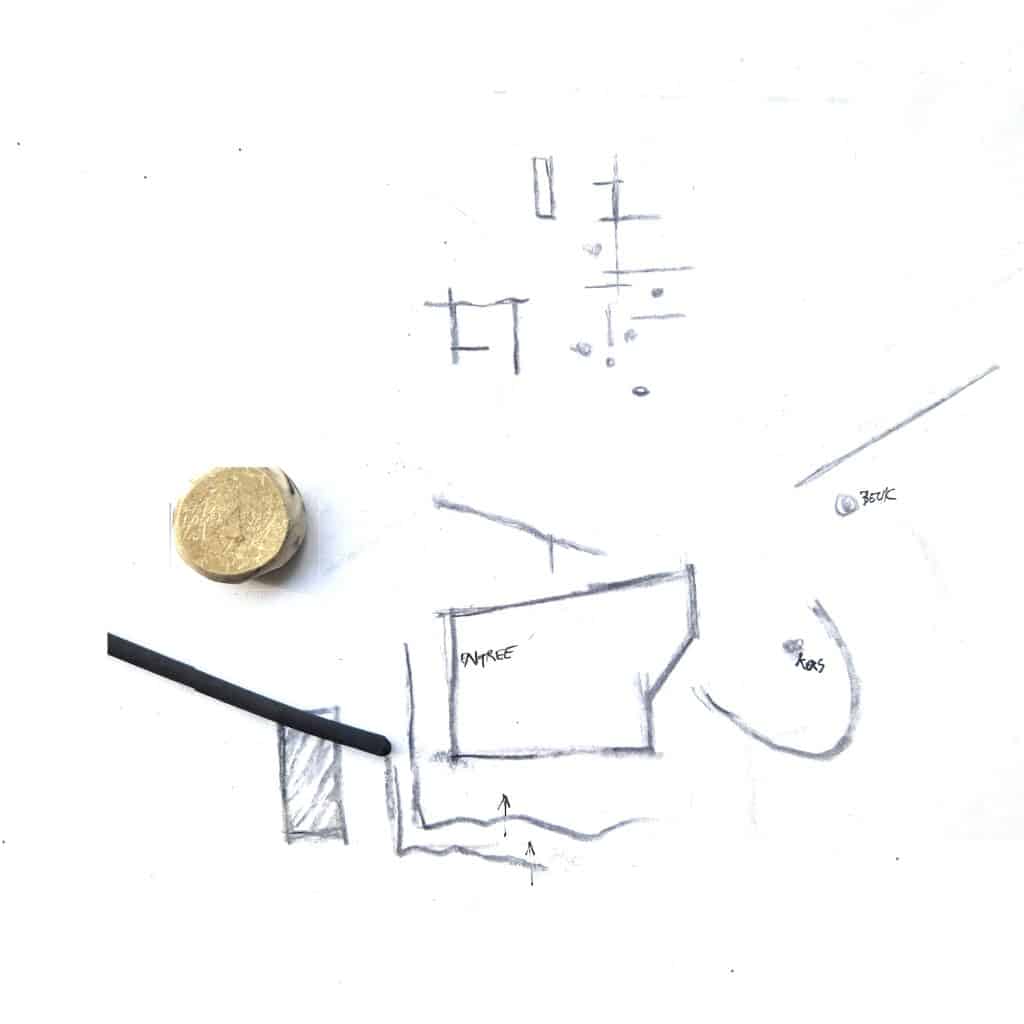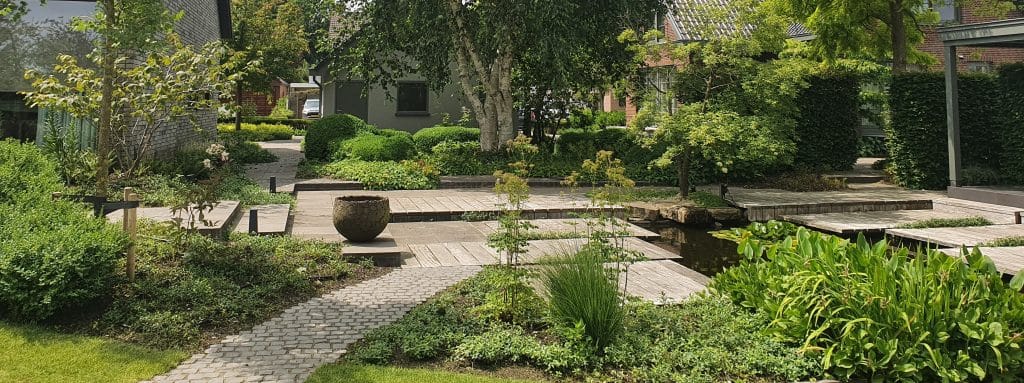The Garden Comes to Mean Something to You
Every idea has its own story.
Clients, and often fellow designers, wonder how ideas are born — how they take shape. Each object or design carries a story of its own, yet there is always one guiding principle: every idea is bound to its place through green.

The atmosphere – a natural kind of wonder
Our own place here in the polder of Kockengen is often visited. People say: paradisiacal, connecting, surprising, extraordinary.
It isn’t so much the garden you think you want — it’s the atmosphere that moves you. A natural kind of wonder.
Green in many forms, playing with building, space and detail.
Greens responding to one another: from wild hawthorn to scattered groups of daisies in the grass. Borders that stay alive, not only in bloom but in the unfolding of leaves, the rhythm of verticals and horizontals, and the winter stillness that remains engaging.

The first conversation is open
That openness already sets the tone for a beautiful project. The start is a special moment — for both garden architect and client, a little exciting. Naturally so: you begin to look inside each other’s world. How do we perceive things? What feels important to each of us?
Ideas start forming from the very first visit — translating what you see, sense and imagine. The client’s story plays a major role: everyone brings their history, their present, and the trace of that on their own place. What has been created here — indoors through art and objects, outdoors through planting and structure? What atmosphere lives in these spaces?
It is an art to sense and interpret that. Valuable, because as the design unfolds, that shared understanding quietly remains beside you.
The first meeting is open — you are yourself, everything may enter.
The second visit is different: you come alone. No one around, only the place itself. You notice again what you see, feel, and experience. You take time to uncover what lies hidden, undisturbed by words. You read the existing values — of soil, material, plants. To find a deeper layer in the design, such a visit is indispensable.
The conversations drift — about the garden and so much more: holidays, a neighbour’s commotion, a painting that feels almost right but not quite. Together you look, and find its place.
Sensing space in three dimensions
In the days after, the impressions return. Gradually a direction appears. You begin to think in materials — the hard (stone, steel), the softer (gravel, wood). What kind of skin might fit these materials?
Where might trees stand, where can they grow tall, where must they stay small? You read light and shade — where it will be hot, where the light falls high, where dampness lingers. You begin to sense dimensions, to imagine lines of sight.
Thinking in form and space – like an abstract painting
At first it seems natural to look for structure: where will we sit, where will the lawn be, how do we look out? But it is better to begin with form and space — an abstract composition. Not easy, because we are all trained to think in functions: terrace, path, parking, a place to play, “they’d like a pond.”
But when you first see the ground — its trees, planting, edges and space — as an abstract painting, and begin to translate it into three dimensions, hidden ideas start to appear.
A well-designed garden always holds small surprises, things that don’t reveal themselves right away. Only by living in the garden do you begin to see them.

A good garden is timeless
The path toward a beautiful, special garden is a shared, engaging process.
Such dedication gives confidence in the garden’s growth — in its maturing.
And when it does, it comes to mean something to you.
